City Wall Stele Forest: An Enchanting Blend of Nature and Ancient Culture
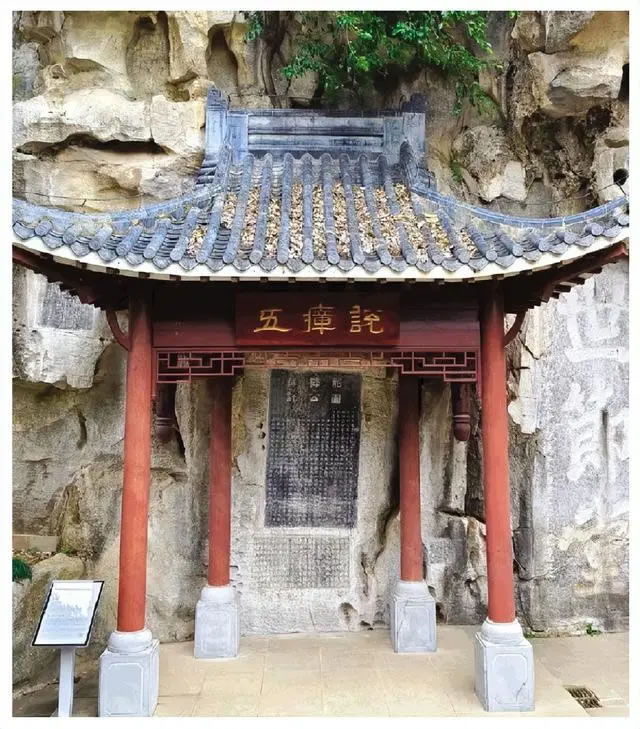
An Essential Guide to Visiting City Wall Stele Forest Historical And Cultural Scenic Area
In This Guide
- An Essential Guide to Visiting City Wall Stele Forest Historical And Cultural Scenic Area
- The Rich History and Legends of City Wall Stele Forest Historical And Cultural Scenic Area
- Main Highlights: What You Absolutely Can’t Miss
- Planning Your Visit: A Practical Guide
- Tickets: Prices, Booking, and Tips
- How to Get There: A Complete Transportation Guide
- Local Cuisine and Accommodation Nearby
- Frequently Asked Questions
- Final Thoughts on Your Trip
Nestled within the ancient city of Xi’an, the City Wall Stele Forest Historical and Cultural Scenic Area stands as a testament to China’s rich history and artistic heritage. Often overshadowed by the more famous Terracotta Warriors, this hidden gem offers an immersive glimpse into the profound cultural tapestry of the Tang and Han dynasties. The Stele Forest, known in Chinese as Beilin, is home to one of the largest collections of stone tablets in the world, each carved with inscriptions that echo the thoughts and philosophies of past scholars and emperors.
As you wander through this tranquil landscape, you’ll encounter over 2,000 steles dating back to the Han dynasty, each telling its own unique story. Among these treasures is the renowned Dazhong Temple Stele, crafted in 837 A.D., which holds the oldest existing texts of the Confucian classics. The museum not only preserves these artifacts but also serves as a vibrant educational center, illuminating the significance of these stone inscriptions in the context of Chinese history.
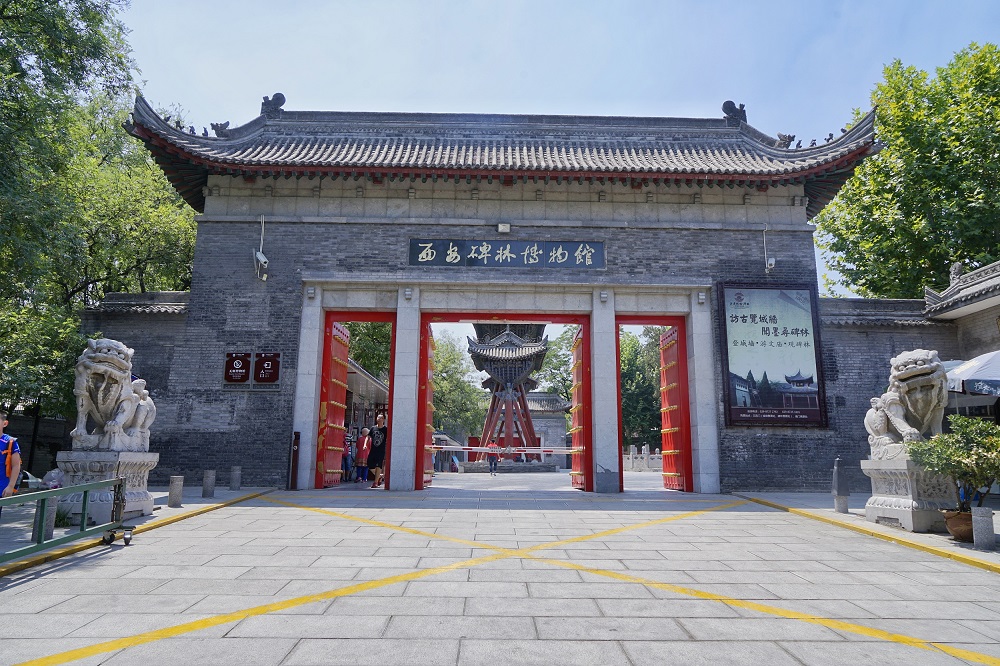
City_Wall_Stele_Forest_Historical_And_Cultural_Scenic_Area.
Visiting the City Wall Stele Forest is not just a stroll through a museum; it is a journey through time. The serene atmosphere, punctuated by the rustling of leaves and the whisper of history, invites you to reflect on the wisdom of the ancients. Whether you are a history buff, a cultural enthusiast, or simply seeking a peaceful escape from the bustling city, the Stele Forest is a must-visit destination that promises to enrich your understanding of Chinese civilization.
Prepare to be captivated by the intricate carvings, the profound meanings behind the texts, and the picturesque setting that blends nature with history. This is a place where the past and present intertwine, offering an unparalleled experience that will resonate long after your visit.
The Rich History and Legends of City Wall Stele Forest Historical And Cultural Scenic Area
Unveiling the Legacy of the City Wall Stele Forest
Nestled within the ancient city of Xi’an, the City Wall Stele Forest Historical and Cultural Scenic Area (城墙·碑林历史文化景区) stands as a remarkable testament to China’s rich history and cultural heritage. This enchanting site, often overshadowed by the more famous Terracotta Warriors, is home to the Forest of Stone Steles Museum, which houses an extraordinary collection of over 2,000 stone tablets. These steles, which date back as far as the Han Dynasty, serve as both historical artifacts and artistic masterpieces, offering a unique glimpse into China’s past.

City_Wall_Stele_Forest_Historical_And_Cultural_Scenic_Area.
A Historical Treasure Trove
The roots of the Stele Forest can be traced back to 837 A.D. when the oldest existing texts of the Confucian classics were inscribed on stone. This practice was not merely for preservation but was also a means of disseminating knowledge throughout the empire. The steles served as public records, educational tools, and expressions of the artistic prowess of their creators. The collection uniquely reflects the evolution of Chinese calligraphy, showcasing the intricate craftsmanship that has been passed down through generations.
The steles cover a myriad of topics, including philosophy, history, and literature, allowing visitors to delve deep into the intellectual currents that shaped Chinese civilization. Among the most notable is the Daqin Stele, which documents the introduction of Buddhism to China, representing a significant cultural exchange during the Tang Dynasty.
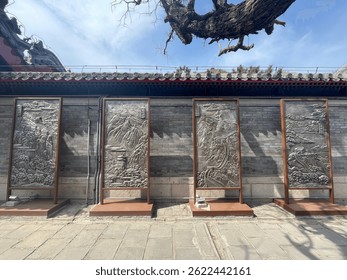
City_Wall_Stele_Forest_Historical_And_Cultural_Scenic_Area.
Legends and Lore
Beyond their historical significance, the steles are steeped in legends and folklore. One popular tale tells of a wise scholar who, after a lifetime of study, sought to immortalize his teachings. He carved his wisdom into a stone tablet, which, according to legend, granted good fortune to anyone who could comprehend its meaning. This tale highlights the reverence that the steles command in Chinese culture, symbolizing the enduring power of knowledge.
Another legend speaks of the Guardian of the Steles, a mythical figure said to protect the wisdom contained within the stones. It is believed that those who approach the steles with respect and a thirst for knowledge will be rewarded with insight and understanding, embodying the spirit of learning that permeates the area.

City_Wall_Stele_Forest_Historical_And_Cultural_Scenic_Area.
The Architectural Marvel
The architectural design of the Stele Forest Museum itself is a work of art, blending traditional Chinese aesthetics with modern functionality. The tranquil gardens surrounding the museum provide a serene atmosphere, inviting visitors to reflect on the profound history encapsulated within the steles. Walking through the museum, one can almost hear the whispers of scholars and poets from centuries past, their voices echoing through time.
Engaging with History
For international travelers interested in Chinese history and culture, the City Wall Stele Forest offers an immersive experience that is both enlightening and inspiring. Guided tours are available, allowing visitors to explore the significance of specific steles while gaining deeper insights into the historical context surrounding them.
The area also hosts various cultural events, including calligraphy demonstrations and traditional performances, providing a vibrant backdrop for understanding the living traditions of China.

City_Wall_Stele_Forest_Historical_And_Cultural_Scenic_Area.
Conclusion
The City Wall Stele Forest Historical and Cultural Scenic Area is not just a museum; it is a portal into the heart of Chinese civilization. By exploring its rich history and enduring legends, visitors can appreciate the profound impact of the written word and the artistry that has shaped the cultural landscape of China. As you stroll through the serene paths lined with ancient stone tablets, you will find yourself immersed in a narrative that transcends time, celebrating the wisdom of the past while inviting you to ponder the future.
Main Highlights: What You Absolutely Can’t Miss
Discover the Essence of the City Wall Stele Forest
The City Wall Stele Forest Historical and Cultural Scenic Area is a treasure trove for anyone captivated by Chinese history and culture. Nestled within the ancient city of Xi’an, this site offers a unique blend of art, history, and spirituality that is hard to match. Here’s a guide to the main highlights you won’t want to miss.

City_Wall_Stele_Forest_Historical_And_Cultural_Scenic_Area.
1. The Forest of Stone Steles Museum
Home to the largest collection of stone steles in China, this museum showcases over 2,000 engraved tablets, including the oldest existing texts of the Confucian classics, dating back to 837 A.D. Each stele is a monumental piece of history, revealing the philosophies, literature, and artistic expressions of ancient China. As you wander through the museum, take time to read the inscriptions, which offer profound insights into the thoughts and beliefs of past generations.
2. The Historic Steles
Among the most significant steles is the Stele of the Buddhist Canon, which provides an invaluable look into the spread of Buddhism in China. The intricate carvings and calligraphy make these steles not only historical documents but also stunning works of art. Don’t miss the chance to capture their beauty on camera!

City_Wall_Stele_Forest_Historical_And_Cultural_Scenic_Area.
3. Cultural Performances
The scenic area often hosts cultural performances that bring ancient traditions to life. From traditional music to martial arts demonstrations, these events provide an immersive experience into the rich cultural tapestry of Xi’an. Make sure to check the schedule during your visit to catch a live performance.
4. The Surrounding City Wall
The City Wall itself, a magnificent relic of the Ming Dynasty, encircles the Stele Forest area and offers stunning views of Xi’an. You can walk or cycle along the top of the wall, taking in panoramic views of the city and its vibrant neighborhoods. The contrast between the historical significance of the wall and the modernity of the city below is truly breathtaking.

City_Wall_Stele_Forest_Historical_And_Cultural_Scenic_Area.
5. Educational Exhibits
Engage with interactive exhibits designed to educate visitors about the history of the steles and their significance in Chinese culture. These displays often provide context about the evolution of Chinese writing and the importance of calligraphy. It’s an excellent way to deepen your understanding of the cultural heritage represented in this area.
6. Nearby Attractions
Extend your exploration by visiting nearby attractions such as the Shaanxi History Museum, which houses a vast collection of artifacts from the region’s rich history, and the Xi’an Muslim Quarter, known for its vibrant atmosphere and delicious street food. Both locations are within walking distance and complement your visit to the Stele Forest with further insights into Xi’an’s diverse cultural landscape.
7. Scenic Spots for Reflection
Take a moment to appreciate the tranquil gardens that surround the museum. These peaceful spots provide a perfect setting for reflection after absorbing the rich history and cultural significance of the steles. Enjoy the serene environment as you contemplate the stories etched in stone.

City_Wall_Stele_Forest_Historical_And_Cultural_Scenic_Area.
Conclusion
The City Wall Stele Forest Historical and Cultural Scenic Area is more than just a museum; it’s a gateway to understanding the profound historical narratives that shape Chinese culture. Whether you’re an avid historian, a lover of art, or simply a curious traveler, this site is a must-visit during your time in Xi’an. Make sure to set aside ample time to fully immerse yourself in the beauty and significance of this remarkable destination.
Planning Your Visit: A Practical Guide
Essential Tips for Your Visit to the City Wall Stele Forest Historical and Cultural Scenic Area
When planning your visit to the City Wall Stele Forest Historical and Cultural Scenic Area (城墙·碑林历史文化景区) in Xi’an, you are about to immerse yourself in a rich tapestry of Chinese history, art, and culture. This scenic area is not just a museum; it is a journey through time, showcasing the oldest known texts of Confucian classics and a remarkable collection of over 2,000 engraved stone tablets dating back to the Han dynasty. Here’s everything you need to know to make the most of your visit.
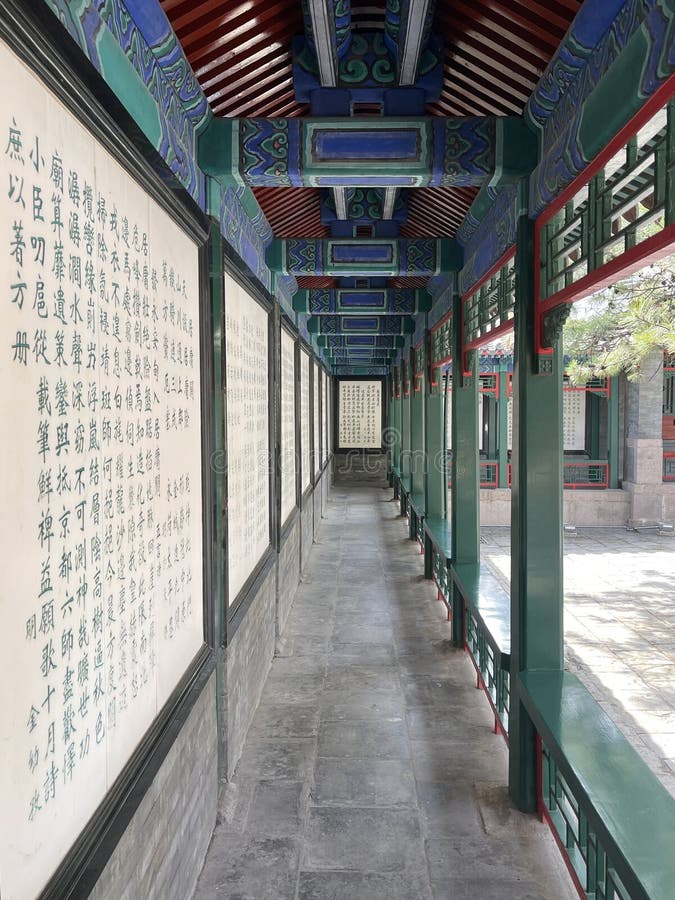
City_Wall_Stele_Forest_Historical_And_Cultural_Scenic_Area.
Opening Hours
The Stele Forest Museum is open daily from 8:00 AM to 6:45 PM, allowing ample time for exploration. Try to arrive early to beat the crowds and enjoy a more intimate experience with the steles.
Ticket Information
- Admission Fees: Entrance costs around ¥80 (approximately $12). Consider purchasing tickets online in advance to avoid long lines.
- Discounts: Check for student discounts or group rates if applicable.
How to Get There
The Stele Forest is conveniently located near the heart of Xi’an. You can reach it by:

City_Wall_Stele_Forest_Historical_And_Cultural_Scenic_Area.
- Metro: Take Line 2 to the Beilin Museum Station. The museum is just a short walk away.
- Taxi: A taxi ride from the city center should cost around ¥20-30.
- Walking: If you are staying nearby, the scenic walk will allow you to enjoy other local attractions along the way.
What to Expect
- Exquisite Collection: Marvel at the largest collection of steles cut in 837 A.D., with a diverse array of inscriptions that tell the story of Chinese civilization.
- Cultural Significance: The museum houses the oldest existing texts of the Confucian classics, offering a deep dive into philosophical thought and historical context.
- Unique Architecture: The museum itself is an architectural gem, blending traditional Chinese design with modern museum aesthetics.
Guided Tours
Consider joining a guided tour for a comprehensive understanding of the exhibits. Here are some popular options:
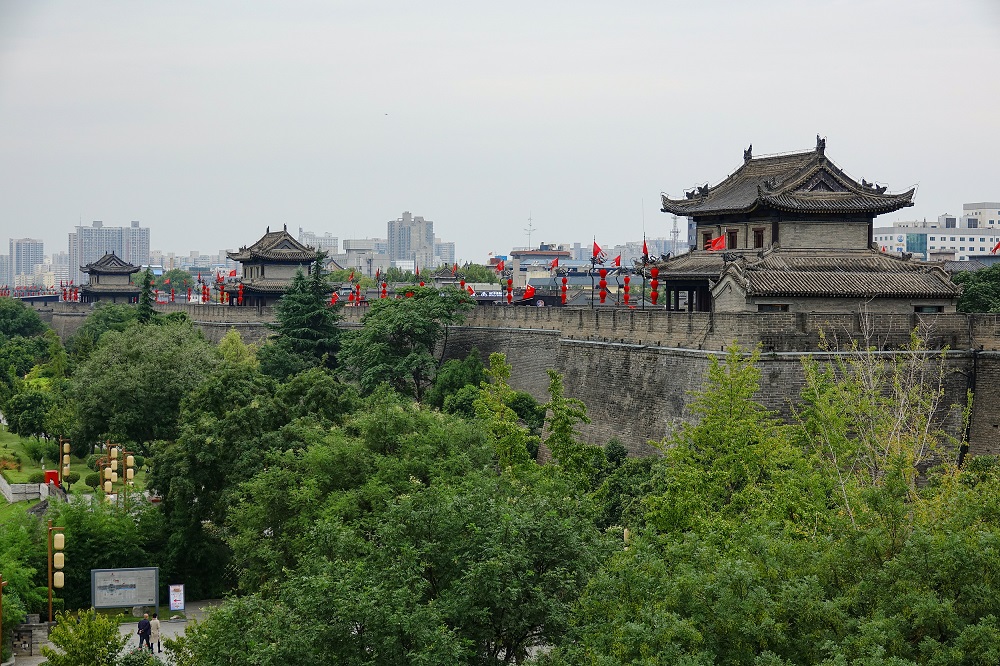
City_Wall_Stele_Forest_Historical_And_Cultural_Scenic_Area.
- Private 1-Day Xi’an City Highlights Tour: A full-day tour featuring the Stele Forest, the Terracotta Warriors, and more.
- Xi’an Cultural Tour: Focus on the highlights of museums and cultural landmarks, lasting about 5 hours.
Tip: Many tours offer free cancellation options, making them flexible for your travel plans.
Nearby Attractions
Make the most of your visit by exploring other historical sites nearby:
- Xi’an City Wall: Just a short distance away, this ancient fortification offers breathtaking views and a chance to walk or bike along its well-preserved ramparts.
- Shaanxi History Museum: A treasure trove of artifacts that provide context to the items found within the Stele Forest.
- Muslim Quarter: Experience Xi’an’s vibrant street food scene and unique cultural blend in this bustling area.
Dining Options
After exploring, recharge at one of the many nearby eateries. Some recommendations include:
- Biangbiang Mian: Famous for its hand-pulled noodles, just a short walk from the museum.
- Three Sisters Dumplings: A local favorite for traditional dumplings and other Chinese dishes.
- Amber Palace Indian Restaurant: For those craving something different, this highly-rated spot offers delicious Indian cuisine.
Practical Tips
- Photography: Be sure to check museum policies regarding photography. Some areas may have restrictions.
- Language: While many signs are in English, hiring a guide or using a translation app can enhance your experience.
- Stay Hydrated: Carry a water bottle, as you will likely spend several hours exploring the area.
With its profound historical significance and stunning collection, the City Wall Stele Forest Historical and Cultural Scenic Area is an essential stop for anyone wishing to delve into China’s rich cultural heritage. Happy travels!
Tickets: Prices, Booking, and Tips
When planning your visit to the City Wall Stele Forest Historical and Cultural Scenic Area, it’s essential to know the ticketing details to ensure a smooth and enjoyable experience. Here’s what you need to know:
Ticket Prices
- General Admission: Approximately ¥50 (Chinese Yuan) per person.
- Discounted Tickets: Reduced rates are typically available for students, seniors, and groups. Make sure to carry valid identification to claim these discounts.
- Free Entry: Children under a certain height (usually around 1.2 meters) can enter for free, but you should check the specific regulations at the entrance.
Booking Information
- On-site Purchase: Tickets can be purchased directly at the entrance of the scenic area. This is a convenient option if you prefer flexibility in your itinerary.
- Online Booking: For those who wish to secure their tickets in advance, online reservations can often be made through various travel platforms or the official museum website. This method is particularly recommended during peak tourist seasons to avoid long queues.
- Guided Tours: Many travelers opt for guided tours, which often include entrance fees in the package. These tours provide deeper insights into the rich history and significance of the steles, making your visit even more enlightening.
Visiting Hours
The City Wall Stele Forest is typically open from 8:00 AM to 6:45 PM daily. It’s advisable to arrive early to make the most of your visit, as the museum houses an extensive collection that deserves ample time for exploration.
Tips for Your Visit
- Plan Ahead: Consider combining your visit with other nearby attractions, such as the Xi’an City Wall or the Shaanxi History Museum, to maximize your experience in this historic city.
- Audio Guides: Look for audio guides or informational pamphlets, which can enhance your understanding of the steles and their historical context.
- Stay Hydrated: Ensure you carry water, especially during the summer months, as exploring the area can be quite extensive.
- Check for Events: Before your visit, check if there are any special exhibitions or cultural events happening at the Stele Forest, as these can enrich your experience.
By keeping these details in mind, you can enjoy a seamless visit to one of Xi’an’s most fascinating cultural sites, immersing yourself in the profound history etched in stone.
How to Get There: A Complete Transportation Guide
Your Journey to the City Wall Stele Forest Historical and Cultural Scenic Area
Visiting the City Wall Stele Forest Historical and Cultural Scenic Area in Xi’an is a rewarding experience that immerses you in China’s rich history. Located near the city center, this scenic area is easily accessible by various modes of transportation. Here’s how to navigate your way there seamlessly.
By Air
Xi’an Xianyang International Airport (XIY) is the primary airport serving the city. Upon arrival, you have several options to reach the Steles Forest:
- Airport Shuttle Bus: The shuttle bus operates regularly from the airport to downtown Xi’an. Look for the bus route that stops at the Bell Tower area, which is conveniently located near the scenic area.
- Taxi: Taxis are readily available at the airport. A ride to the Stele Forest should take about 40 minutes, depending on traffic, and will cost approximately CNY 100-150.
By Train
If you’re traveling to Xi’an by train, you’ll likely arrive at either Xi’an Railway Station or Xi’an North Railway Station.
- From Xi’an Railway Station:
- Metro: Take Metro Line 2 towards the Xingzheng Institute station. Transfer to Line 1 at Beidajie Station and get off at the Bell Tower Station. From there, it’s a short walk to the Stele Forest.
-
Taxi: A taxi ride from the station will take about 10 minutes and costs around CNY 20-30.
-
From Xi’an North Railway Station:
- Metro: Take Metro Line 2 towards Xingzheng Institute and transfer at Beidajie Station to Line 1, heading to the Bell Tower.
- Taxi: Expect a taxi ride to take about 30 minutes, costing around CNY 60-80.
By Bus
Xi’an has an extensive public bus network, making it easy to reach the Stele Forest. Here are some convenient bus routes:
- Bus No. 16, 21, or 27: These buses stop at the Bell Tower, which is within walking distance of the Stele Forest.
- Bus No. 601: This route takes you closer to the scenic area directly. Be sure to check local schedules for the most accurate times.
By Metro
The Xi’an Metro is a modern and efficient way to navigate the city:
- Line 1: Get off at Bell Tower Station. The Steles Forest is just a 15-minute walk from the station. Follow the signs to the City Wall, and you’ll find the entrance nearby.
On Foot
For those staying in the vicinity of the city center, walking to the City Wall Stele Forest is a delightful option. The area is pedestrian-friendly, and you can enjoy the beautiful sights along the way, including the iconic Xi’an Bell Tower and vibrant local shops.
Tips for Travelers
- Language: While many signs are in English, not all locals may speak it fluently. Having a translation app or a phrasebook can be helpful.
- Cash: While electronic payments are widely accepted, it’s advisable to carry some cash, as small vendors may not accept cards.
- Plan Ahead: Check the opening hours of the Stele Forest before your visit. It usually operates from 8:00 AM to 6:45 PM.
By following this guide, you can easily navigate your way to the City Wall Stele Forest Historical and Cultural Scenic Area, ensuring your visit is as enjoyable and enriching as possible. Dive into the depths of history and culture that Xi’an has to offer!
Local Cuisine and Accommodation Nearby
Savoring Xi’an: Culinary Delights and Comfortable Stays
When visiting the City Wall Stele Forest Historical and Cultural Scenic Area, immerse yourself in Xi’an’s rich history not just through its landmarks, but also through its vibrant local cuisine and welcoming accommodations. This region is a treasure trove for food lovers and history enthusiasts alike.
Culinary Highlights
- Three Sisters Dumplings
- Rating: 4.1/5
- Distance: 0.2 miles
-
This charming eatery is known for its mouthwatering dumplings, which are a staple in Xi’an’s culinary scene. The variety of fillings, from traditional pork to vegetarian options, ensures that everyone can find something to enjoy.
-
Biangbiang Mian
- Rating: 4.9/5
- Distance: 471 ft
-
Renowned for its hand-pulled noodles, this spot offers a taste of the authentic flavors of Northwestern China. The thick, wide noodles are typically served with a savory sauce and a touch of chili oil, making it a must-try for adventurous eaters.
-
Haidilao Hot Pot Cheng
- Rating: 4.7/5
- Distance: 0.9 miles
-
Experience the fun of a hot pot meal where you can cook your own ingredients in a bubbling broth at your table. Haidilao is famous for its exceptional service and vibrant atmosphere, perfect for a lively dining experience.
-
Amber Palace Indian Restaurant
- Rating: 4.9/5
- Distance: 0.8 miles
-
For those craving something different, this highly-rated Indian restaurant offers a delightful array of dishes, from fragrant curries to freshly baked naan. Its vegetarian-friendly options cater to a diverse clientele.
-
PuCheng FanZhuang
- Rating: 4.0/5
- Distance: 0.1 miles
- This restaurant specializes in traditional Northwestern Chinese dishes, with a focus on hearty flavors and local ingredients. The ambiance is casual, making it a great spot to unwind after a day of exploration.
Accommodation Options
After indulging in Xi’an’s culinary delights, you’ll want a comfortable place to rest. Here are some nearby accommodations that offer convenience and a touch of local charm:
- Sofitel Xi’an on Renmin Square
-
This luxurious hotel offers a blend of modern amenities and traditional Chinese hospitality. Located just a short distance from the City Wall Stele Forest, it’s perfect for travelers seeking comfort and style.
-
Xi’an Shuyuan Youth Hostel
-
Ideal for budget travelers, this hostel provides a cozy atmosphere with both dormitory and private room options. Its central location makes it easy to access major attractions, including the Stele Forest.
-
Hilton Xi’an
-
A sophisticated choice for those looking for upscale accommodations, the Hilton offers spacious rooms and excellent dining options. Its proximity to the historic sites makes it a convenient base for exploring the city.
-
The Westin Xi’an
-
Nestled in a tranquil area, The Westin provides a peaceful retreat with luxurious rooms and a full-service spa. After a day of sightseeing, unwind in their serene environment, complete with stunning views of the ancient city.
-
Jinjiang Inn Xi’an
- This budget-friendly option offers comfortable rooms with all the essentials. It’s a great choice for travelers who prioritize value without compromising on location.
Conclusion
Xi’an is not only a city steeped in history but also a culinary paradise waiting to be explored. Whether indulging in local delicacies or resting in comfortable accommodations, your visit to the City Wall Stele Forest will be a delightful experience that combines culture, history, and flavor.
Frequently Asked Questions
Common Inquiries About the City Wall Stele Forest Historical and Cultural Scenic Area
1. What is the City Wall Stele Forest Historical and Cultural Scenic Area?
The City Wall Stele Forest, also known as the Forest of Stone Steles Museum, is a historical and cultural site in Xi’an, China. It houses the largest collection of stone steles in the world, including over 2,000 engraved tablets, some dating back to the Han dynasty and featuring the oldest existing texts of Confucian classics.
2. What are the opening hours for the museum?
The museum is open every day from 8:00 AM to 6:45 PM. It’s advisable to arrive with ample time to explore the extensive collection.
3. How much does it cost to enter the museum?
Entrance fees can vary, so it’s best to check the official website or inquire upon arrival. Typically, ticket prices are reasonable, making it accessible for both local and international visitors.
4. Are guided tours available?
Yes, guided tours are offered that provide in-depth insights into the historical significance of the steles and the surrounding area. These tours often include visits to other nearby attractions, such as the Xi’an City Wall and the Shaanxi History Museum.
5. Is the City Wall Stele Forest accessible for everyone?
The museum and surrounding area are generally accessible to visitors with mobility challenges. However, it’s always best to check specific facilities available for those with disabilities.
6. What nearby attractions can I visit after the museum?
The City Wall Stele Forest is conveniently located near several other key attractions, including:
– Xi’an City Wall: A well-preserved ancient fortification.
– Shaanxi History Museum: Showcasing a rich collection of artifacts.
– Muslim Quarter: A vibrant area filled with local cuisine and culture.
7. Is photography allowed in the museum?
Photography is typically allowed in the museum, but it’s recommended to check for any specific restrictions, particularly in certain exhibit areas.
8. What is the best time to visit the City Wall Stele Forest?
The best time to visit is during the spring (March to May) and autumn (September to November) months, when the weather is pleasant. Early mornings or late afternoons are ideal for avoiding crowds and enjoying a more tranquil experience.
Final Thoughts on Your Trip
As your journey through the City Wall Stele Forest Historical and Cultural Scenic Area draws to a close, take a moment to reflect on the rich tapestry of history and culture you have encountered. This remarkable site, nestled in the heart of Xi’an, offers not just a glimpse into the past but an immersive experience that connects you to the very essence of Chinese heritage.
A Journey Through Time
Walking among the ancient steles, each carved tablet whispers stories of dynasties long gone and philosophies that have shaped the fabric of Chinese society. The Forest of Stone Steles Museum stands as a testament to this legacy, housing the largest collection of stone tablets dating back to the Han dynasty and the oldest surviving texts of the Confucian classics. This is not merely a museum; it is a sanctuary of knowledge and a celebration of intellectual achievement.
Embrace the Cultural Mosaic
Beyond the steles, Xi’an itself is a vibrant city that blends the old with the new. From the bustling Muslim Quarter to the majestic Xi’an City Wall, your exploration can continue as you delve deeper into the city’s rich cultural landscape. Taste the local delicacies at nearby restaurants, engage with artisans, and perhaps even catch a glimpse of a traditional performance.
Making Memories
As you prepare to leave, consider the moments that have resonated with you—whether it was standing before an ancient inscription or enjoying a meal surrounded by the sights and sounds of local life. Each experience adds a layer to your understanding of not just Xi’an, but of China’s profound historical narrative.
Your Next Adventure Awaits
The City Wall Stele Forest is more than just a destination; it is an invitation to continue your exploration of the myriad stories that lie within China’s borders. Whether your next stop is a remote temple, a bustling market, or a serene landscape, let the echoes of history guide you towards new adventures.
In closing, may the memories of your visit inspire a deeper appreciation for the cultural and historical wonders of this incredible country. Safe travels, and may your journey be filled with discovery and joy!